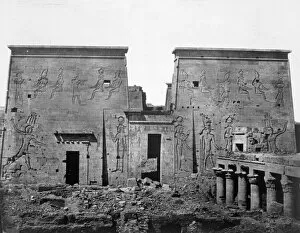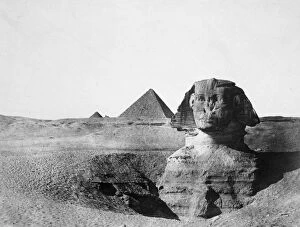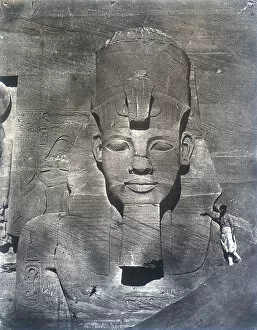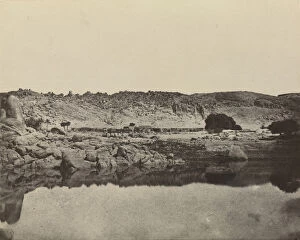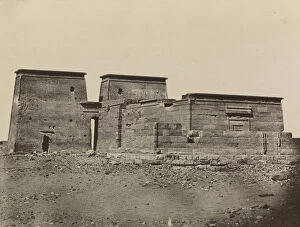Maxime Du Collection (page 5)
Maxime du Camp, a French writer and photographer, captured the beauty and grandeur of ancient Egyptian landmarks through his lens
For sale as Licensed Images
Choose your image, Select your licence and Download the media
Maxime du Camp, a French writer and photographer, captured the beauty and grandeur of ancient Egyptian landmarks through his lens. In September 1850, he gazed upon the majestic Temple of Jupiter in Baalbek (Heliopolis), its intricate architecture standing as a testament to human ingenuity. The following year, in December 1849, he marveled at the sight of the imposing Sphinx and towering pyramid of Menkazeh (Mycerinus), symbols of Egypt's rich history. Du Camp also ventured into Siout, where he documented Muslim tombs with great precision between 1849-50. His photographs transported viewers to Djebel-Aboucir on the left bank of the Second Cataracte in March 1850. There, they could almost feel the cool breeze brushing against their faces as they admired nature's masterpiece. The photographer continued his journey along the Nile River and captured breathtaking views at different points. In March 1850, he immortalized scenes from both sides of the Second Cataracte - Batu-el-Hadjar being one such captivating spot. As Du Camp explored further eastwards in September 1850, ruins greeted him at Baalbek's eastern side. He skillfully framed a general view that showcased remnants filled with stories waiting to be unraveled. Moving back towards Cairo during his expedition between December 1849-January 1850, Du Camp discovered Sultan El-Goury's tomb - an architectural gem that whispered tales from centuries past. In Abousembil during March 1850, half of Athor's Speos facade caught Du Camp's attention; its intricate carvings revealing glimpses into ancient religious practices. Pylons belonging to Sebona Temple stood tall before him on April 3rd that same year - silent witnesses to bygone rituals performed within their walls.

